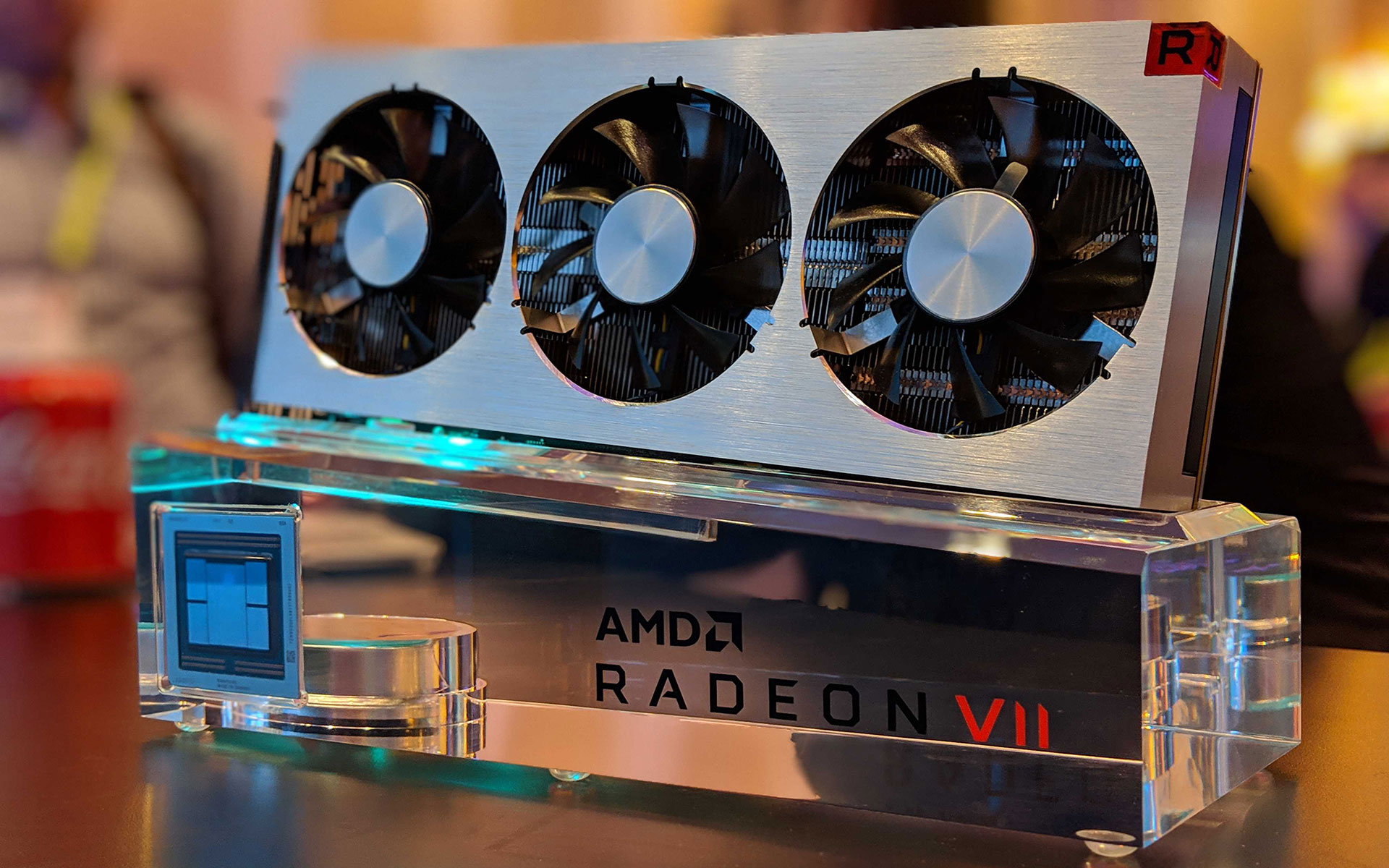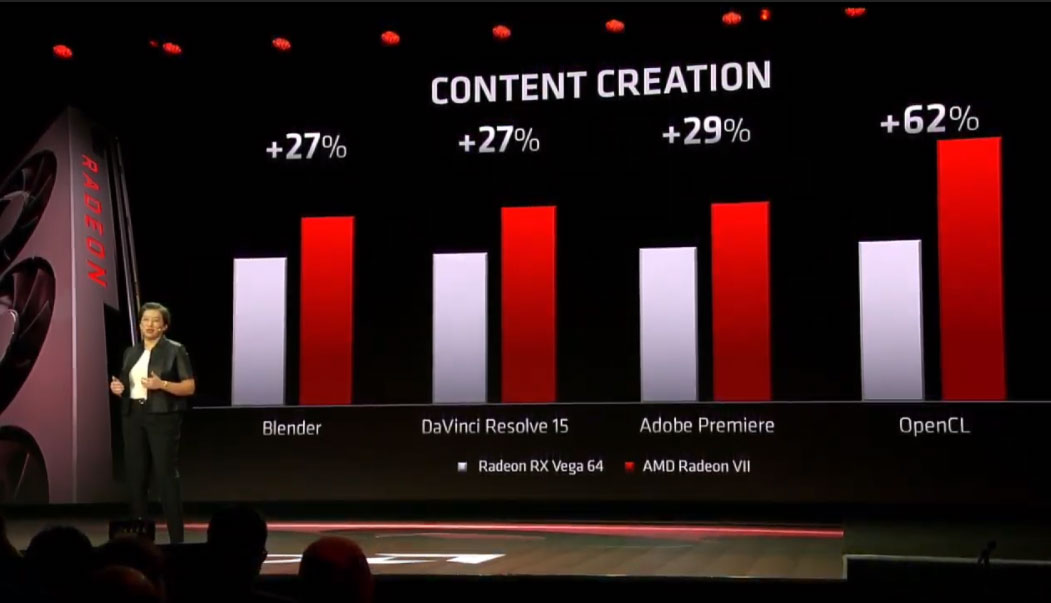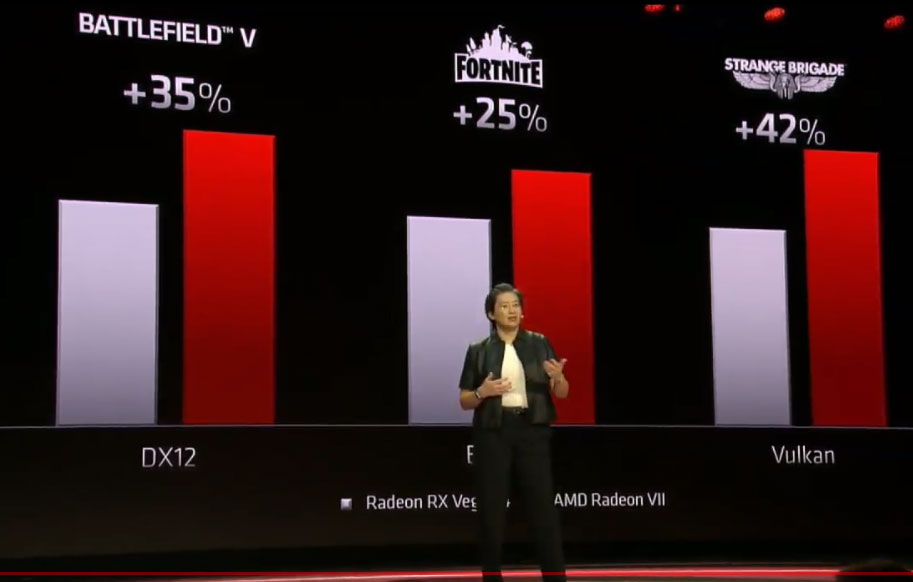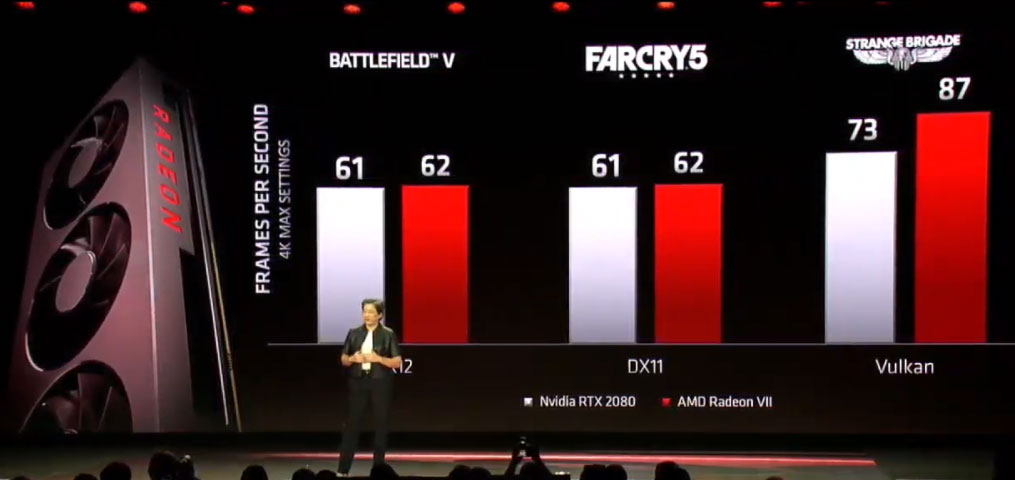AMD unveils next-gen Radeon VII, launches February 7 for $699
This will compete with Nvidia's GeForce RTX 2080.

AMD has maintained that it's not throwing in the towel in the high-end graphics card space, and today it came out swinging with the Radeon VII, the world's first 7nm GPU for consumers.
Vega has already existed in 7nm form, but only in AMD's Radeon Instinct accelerators for deep learning workloads. In contrast, the Radeon VII takes aim squarely at gamers. We'll get to some of AMD's performance claims in a moment, but first let's go over the specs.
The Radeon VII boasts 60 compute units and 3,840 stream processors running at up to 1.8GHz. It also has a generous frame buffer—16GB of high bandwidth memory (HBM2) delivering 1TB/s of memory bandwidth. It's not really a surprise that AMD is sticking with HBM2 instead of GDDR6, as that's been the case with every Vega model so far.
AMD's reference design follows Nvidia in ditching the blower format, going for a triple fan design instead. That's probably for the best, as the former blowers could get incredibly loud at higher fan speeds. Plus, AMD apparently still needs to cool a 295W chip.
AMD says its 7nm architecture delivers 25 percent faster performance than the previous model, while consuming the same amount of power. What does that translate into? Here's a look:

In content creation chores, AMD claims the Radeon VII outpaces the Radeon RX Vega 64 by anywhere from 27 percent (blender) to 62 percent (OpenCL) in content creation chores.
That's all well and good, but we're most interested in gaming performance. On that front, AMD offered up some additional benchmarks:
The biggest gaming news, reviews and hardware deals
Keep up to date with the most important stories and the best deals, as picked by the PC Gamer team.

AMD's own tests show the Radeon VII blowing past the Radeon RX Vega 64 in a small selection of games. It's not a large sample size, but a 35 percent performance uplift in Battlefield V is impressive at first glance. We don't know what settings AMD used, though probably 4k ultra given the 16GB frame buffer and massive bandwidth.
What's even more interesting to us is how the Radeon VII stacks up against Nvidia's GeForce RTX 2080.

Again, we don't know what settings AMD is using, but the claim here is that the Radeon VII can keep up with the GeForce RTX 2080 in DirectX 12 and 11 games, and surpass it in Vulkan performance. One thing AMD didn't mention is real-time ray tracing support, as that's not included here. Nvidia has the obvious advantage in that regard.
AMD is pricing the Radeon VII at $699, the same as a reference RTX 2080, and $100 cheaper than Nvidia's Founders Edition. Even if the performance is what AMD claims, the Radeon VII might be a tough sell at that price point, given that it lacks real-time ray tracing and DLSS. We'll have to wait and see how performance actually shakes out though, as well where street pricing lands.
The Radeon VII will be available February 7. If you're looking to upgrade now, here are January's cheap graphics card deals.
Paul has been playing PC games and raking his knuckles on computer hardware since the Commodore 64. He does not have any tattoos, but thinks it would be cool to get one that reads LOAD"*",8,1. In his off time, he rides motorcycles and wrestles alligators (only one of those is true).


